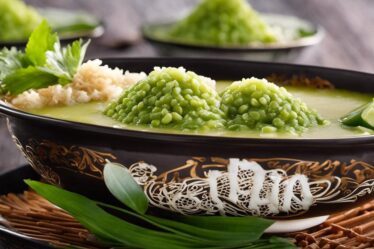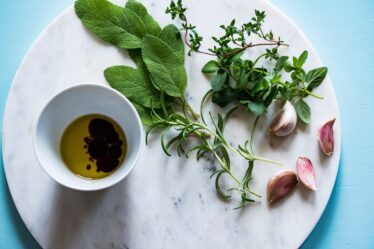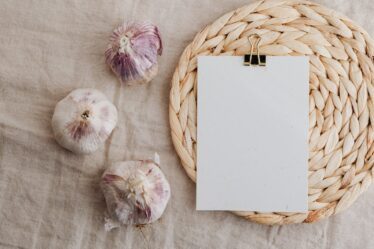
Vanilla bean is a popular ingredient in cooking, known for its sweet and floral flavor profile. It is widely used in a variety of dishes, from desserts to savory dishes and even drinks. The distinct taste of vanilla bean adds depth and complexity to recipes, making it a staple in many kitchens around the world. In this article, we will explore the origins of vanilla bean, its unique characteristics, and its versatility in different cuisines.
Key Takeaways
- Vanilla bean is more than just a spice, it’s a versatile ingredient with many uses in cooking.
- Vanilla bean has been used in cooking for centuries and has origins in Mexico and Central America.
- The flavor profile of vanilla bean is sweet, floral, and can enhance both sweet and savory dishes.
- Vanilla bean comes in many forms including extract, powder, and whole beans.
- Vanilla bean has health benefits such as antioxidants and can be used in a variety of cuisines from around the world.
Vanilla Bean: A Spice or Something More?
Vanilla bean is often classified as a spice due to its aromatic properties and ability to enhance the flavor of dishes. However, it is more than just a spice. Vanilla bean is actually the fruit of an orchid plant called Vanilla planifolia. The beans are harvested from the plant and undergo a lengthy curing process to develop their distinct flavor.
What sets vanilla bean apart from other spices is its complex flavor profile. It has sweet and floral notes with hints of caramel and even a slight woody undertone. This combination of flavors makes vanilla bean a versatile ingredient that can be used in both sweet and savory dishes.
The Origins of Vanilla Bean and Its Use in Cooking
Vanilla bean has a rich history that dates back centuries. It was first discovered by the Totonac people in Mexico, who used it to flavor their chocolate drinks. When the Aztecs conquered the Totonacs, they adopted the use of vanilla bean and introduced it to their own cuisine.
The Spanish conquistadors later brought vanilla bean back to Europe, where it quickly gained popularity among the elite. However, it wasn’t until the 19th century that vanilla bean cultivation spread to other parts of the world, including Madagascar and Tahiti.
Today, vanilla bean is used in a wide range of dishes around the world. It is a key ingredient in desserts such as ice cream, custards, and cakes. It is also used in savory dishes like sauces, marinades, and even in some meat dishes. Its versatility and unique flavor make it a beloved ingredient in many cuisines.
The Flavor Profile of Vanilla Bean: Sweet, Floral, and More
| Flavor Profile | Description |
|---|---|
| Sweet | Vanilla beans have a natural sweetness that is often described as creamy and sugary. |
| Floral | Vanilla beans have a delicate floral aroma that is often compared to the scent of orchids. |
| Woody | Vanilla beans have a subtle woody flavor that is often described as earthy or smoky. |
| Spicy | Vanilla beans have a hint of spice that is often compared to cinnamon or nutmeg. |
| Creamy | Vanilla beans have a rich, creamy flavor that is often used to enhance the taste of desserts and baked goods. |
The flavor profile of vanilla bean is what makes it so popular in cooking. It has a sweet and floral taste with hints of caramel and a subtle woody undertone. The flavor is rich and complex, adding depth to any dish it is used in.
When used in desserts, vanilla bean enhances the sweetness of the dish without overpowering it. It adds a delicate floral note that balances out the richness of ingredients like chocolate or cream. In savory dishes, vanilla bean can add a surprising twist to traditional recipes. Its subtle sweetness can complement the flavors of meats or vegetables, creating a unique and memorable dish.
The Many Forms of Vanilla Bean: Extract, Powder, and Whole Beans
Vanilla bean is available in several different forms, each with its own unique characteristics and uses in cooking. The most common form is vanilla extract, which is made by soaking vanilla beans in alcohol to extract their flavor compounds. Vanilla extract is widely used in baking and can be added to both sweet and savory dishes.
Another form of vanilla bean is vanilla powder, which is made by grinding dried vanilla beans into a fine powder. Vanilla powder is often used as a substitute for vanilla extract and can be added directly to recipes. It is particularly popular in drinks like coffee or hot chocolate.
Whole vanilla beans are the most prized form of vanilla bean. They are used by scraping out the seeds inside the bean and adding them to recipes. The empty bean pod can also be used to infuse flavor into liquids like milk or cream.
The Health Benefits of Vanilla Bean: Antioxidants and More

In addition to its delicious flavor, vanilla bean also offers several health benefits. It is rich in antioxidants, which help protect the body against free radicals and oxidative stress. Antioxidants are known to reduce the risk of chronic diseases such as heart disease and certain types of cancer.
Vanilla bean also contains small amounts of vitamins and minerals, including potassium, magnesium, and calcium. These nutrients are essential for maintaining healthy bones, muscles, and nerve function.
Furthermore, vanilla bean has been found to have anti-inflammatory properties. It can help reduce inflammation in the body, which is linked to various health conditions such as arthritis and inflammatory bowel disease.
Vanilla Bean in Savory Dishes: A Surprising Twist on Traditional Recipes
While vanilla bean is often associated with sweet dishes, it can also be used to add a unique flavor to savory recipes. Its subtle sweetness and floral notes can complement the flavors of meats, vegetables, and sauces.
For example, vanilla bean can be used to enhance the flavor of a marinade for grilled chicken or pork. The sweetness of the vanilla balances out the savory flavors and adds a depth of flavor that is unexpected but delicious.
In sauces, vanilla bean can add a touch of elegance and complexity. It can be used in creamy sauces for pasta or seafood dishes, adding a subtle sweetness that pairs well with rich ingredients like butter or cream.
Vanilla Bean in Drinks: From Coffee to Cocktails
Vanilla bean is a popular ingredient in drinks, adding a sweet and aromatic flavor to beverages of all kinds. It is commonly used in coffee drinks, where it enhances the natural flavors of the coffee beans and adds a hint of sweetness.
In addition to coffee, vanilla bean is also used in hot chocolate, milkshakes, and smoothies. Its sweet and floral notes pair well with chocolate and other sweet ingredients, creating a rich and indulgent drink.
Vanilla bean is also a favorite ingredient in cocktails. It can be used to add depth and complexity to classic cocktails like the Old Fashioned or the Martini. It can also be used to create unique and innovative cocktails, adding a touch of sweetness and aroma to the drink.
The Role of Vanilla Bean in Baking: From Cookies to Cakes
Baking is perhaps where vanilla bean is most commonly used. It is a staple ingredient in many baked goods, from cookies and cakes to pastries and breads.
In cookies, vanilla bean adds a subtle sweetness and aroma that enhances the flavors of the other ingredients. It can be used in both soft and crispy cookies, adding a depth of flavor that makes them irresistible.
In cakes, vanilla bean is often used in both the cake batter and the frosting. It adds a delicate floral note that balances out the sweetness of the cake and creates a harmonious flavor profile.
Vanilla bean is also used in pastries like croissants and danishes, where it adds a touch of sweetness and aroma. In breads, it can be used to create a unique flavor profile that sets them apart from traditional bread recipes.
Vanilla Bean in Ethnic Cuisines: From Indian to Mexican
Vanilla bean is used in a variety of ethnic cuisines around the world, adding its unique flavor to traditional dishes.
In Indian cuisine, vanilla bean is often used in desserts like kheer (rice pudding) or kulfi (Indian ice cream). Its sweet and floral notes pair well with the aromatic spices commonly used in Indian cooking.
In Mexican cuisine, vanilla bean is a key ingredient in traditional dishes like mole sauce and flan. Its rich flavor complements the bold flavors of chilies and chocolate, creating a complex and delicious dish.
In French cuisine, vanilla bean is used in classic desserts like crème brûlée and tarte Tatin. Its delicate flavor enhances the richness of these desserts, creating a truly indulgent experience.
Vanilla Bean: A Versatile Ingredient for Every Kitchen
In conclusion, vanilla bean is a versatile ingredient that can be used in a wide range of dishes. Its unique flavor profile adds depth and complexity to both sweet and savory recipes, making it a staple in many kitchens around the world.
Whether you’re baking cookies, making a sauce, or creating a cocktail, vanilla bean can elevate your dish to the next level. Its sweet and floral notes add a touch of elegance and sophistication, making every bite or sip a memorable experience.
So why not try using vanilla bean in your next culinary adventure? Whether you’re an experienced chef or a novice cook, vanilla bean is sure to impress and delight your taste buds. So go ahead, embrace the versatility of vanilla bean and discover the endless possibilities it offers in the kitchen.
If you’re interested in exploring the world of unique flavors, you might also enjoy reading about huckleberries. This guide for hobbyists on Flavorful Sips provides valuable insights into the characteristics and uses of these delicious berries. And if you’re a fan of fruity delights, the article on Danish strawberries is a must-read. Discover the secrets behind their unrivaled sweetness and learn how to incorporate them into your culinary creations. Lastly, for those who appreciate a refreshing cocktail, the article on creating the perfect mojito is a true gem. Unravel the magic behind this classic drink and impress your friends with your mixology skills.



